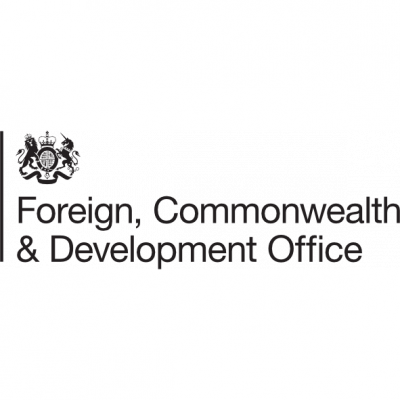Print

Strengthening African Networks for Governance, Accountability and Transparency (SANGAT II) Programme - Phase II
Details
Locations:UK
Start Date:Nov 7, 2016
End Date:Nov 6, 2019
Contract value: GBP 421,554
Sectors: Justice Reform, Macro-Econ. & Public Finance, Monitoring & Evaluation
Categories:Consulting services
Funding Agencies:
Date posted:Feb 27, 2017
Description
CONTRACT FOR: Strengthening African Networks for Governance, Accountability & Transparency (SANGAT II) Programme Phase II
PURCHASE ORDER NUMBER: PO 7446
Objectives:
Objective 1: Conduct Network Analysis/ process evaluation of the two Networks funded under SANGAT II and the network funded under Twende Mbele.
The objective of the Network Analysis/ process evaluation is to better understand how regional peer networks deliver value to members and the extent to which they are improving governance outcomes. This will lay the foundations for the outcome evaluation and potential impact evaluation. The process evaluation will provide deeper understanding of the quality of SANGAT II’s and Twende Mbele’s implementation to the level of its outputs. Specifically it should assess whether SANGAT II’s and Twende Mbele’s outputs are relevant and coherent in relation to what was originally agreed, planned and expected in terms of action.
In order to evaluate networks, the complexity and specific characteristics around them must be understood. This would include the need to developing appropriate network metrics around vibrancy, connectivity and effects, and gathering comparable and consistent data across the network and, where appropriate, between the networks. A network’s current stage of development has implications for evaluation both in terms of what network metrics will be most meaningful and how much and what kind of progress towards outcomes can be expected.
Therefore, network analysis would need to be applied flexibly across the different networks. It would also be possible to add a theory-based component for the network analysis, if a Network Approach ToC were to be developed setting out the theories by which changes are anticipated. This could be developed at the onset when the baseline of the network metrics are developed. Alternatively, using only the network metrics would enable a network analysis to be conducted, but it would not be theory-based.
The supplier would expand upon the above and design and deliver a network analysis of SANGAT II. The design should use the analysis presented in the evaluability assessment at annex 3 as a starting point.
Objective 2: Design and deliver a performance evaluation of the SANGAT II and Twende Mbele programmes:
The theory-based performance evaluation would be based on the premise that:
- A robust identification and analysis of the external environment is carried out.
- The evaluation will focus at examining the results of individual partners and not at high level statements that incorporate each of their results.
A performance evaluation would consider whether networks have achieved what they set out to achieve, i.e. delivered their outputs and outcomes. It would evaluate SANGAT II’s contribution towards its own stated outcomes and impacts within the context that it operates: i.e., effective practices, systems, policies and procedures implemented to a) contribute to better resource mobilisation for tackling poverty, for example the state can accurately estimate expected income in the extractives sector and investigate and prosecute shortfalls; b) reduce impunity for those who abuse office; c) a proportion of all assets recovered are ring-fenced and are now funding improved government capacity to disrupt, investigate and prosecute corruption and crime. The performance evaluation will take place during the intervention’s lifecycle. High level evaluation questions are also set out in section 4.A mixed methods approach would assess whether any observed contribution could reasonably be attributed to the intervention. This would need to be considered for each of the partners individually. This approach should map out the following:
- The causal chain (programme theory of each partner’s work). This already exists - see the M&E Guidance Note (Annex 3) for more details.
- Understanding of the political economy context in each of the member countries.
- How to anticipate heterogeneity of results, i.e. differences in social political setting, target groups and the existence of other interventions.
- Incorporation of appropriate approaches such as case studies, process tracing, contribution analysis, and participatory approaches such a
outcome mapping. The approach will need to define how any attribution of results to the programme is understood.
- Incorporation of thematic comparative reviews which allow for comparison between the networks – e.g. on VfM and gender as DFID cross-cutting
thematic areas; but also areas such as leadership and other aspects of technical assistance (TA).
Evaluating the work of individual partners will need a functioning M&E system in place (see objective 3) that would focus data collection at the output to outcome level, for example outcome mapping. The service provider will need to work with the individual networks to ensure this is in place.
The performance evaluation would follow OECD-DAC guidelines and would be in line with the Paris Principles 1 . The service provider would be expected to involve key stakeholders including relevant government departments in Southern Africa region and civil society groups so there is ownership in the evaluation process. Key partners include the national prosecuting agencies of ARINSA member states, finance ministries in CABRI member states, the South African national Prosecuting Authority, The UNODC and the Foundation for Professional Development. Evaluation advisory input may be sought from South Africa’s Department for Performance, Monitoring and Evaluation.
The service provider would expand upon the above and design and deliver a performance evaluation of SANGAT II. The design should use the analysis presented in the evaluability assessment at annex 2 as a starting point.
Objective 3: Provide proportionate technical assistance to ensure that the baseline and M&E systems are robust:
Whilst there is M&E guidance, logframes and theories of change in place for each network (Annex 3), the service provider will need to allocate some technical assistance resources to support the networks in data collection and management. This includes:
- Fine tuning the M&E framework developed in the SANGAT inception phase as well as establishing clear, measurable and reliable baseline data at
the outset of SANGAT phase II.
- Providing a proportionate and targeted amount of M&E technical support to partners, through the life of the programme, to ensure their
monitoring processes are capturing the data required for evaluation.
- Regular coordination and liaison with M&E focal points in each network as each stage of the evaluation progresses.
- Targeted remote M&E support to network members (to be cleared with DFID in advance of each request).
It is not expected that objective 3 will require a large and sustained input throughout the programme although there would be a more concentrated investment of time in the inception phase to establish systems. The service provider would use the M&E guidance presented in annex 3 as a starting point.
Main site or location: South Lanarkshire

